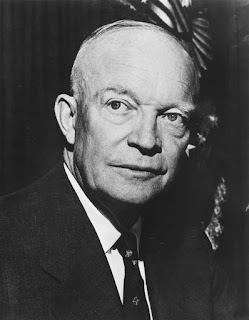What was the Korean War? (1950-53)
Is in this moment that the Cold
War became a global conflict.
In 1945, Korea was freed from the
Japanese. US troops stayed in Korea until 1946.
The country was split in half at
the 38th parallel:
• Communist North Korea led by Kim Il Sung.
• Capitalist
South Korea led by Syngman Rhee.
Note----- China became communist
in 1949.
Domino Theory
Truman believed that, if one
country fell to Communism, then others would follow, like a line of dominoes.
He was worried that, if Korea fell, the Communists would capture Japan.
Justification of US intervention in the War
Truman realized the USA was in a
competition for world domination with the USSR. By supporting South Korea,
America was able to fight Communism without directly attacking Russia.
Kim Il Sung (North Korea) visited
Stalin. In 1949, he persuaded Stalin that he could conquer South Korea. Stalin
did not think that America would dare to get involved, so he gave his agreement.
Later Kim also went to see Mao
Zedong, the leader of China, to get his agreement.
How did the war begin?
Korean War began as a Civil War
between North and South Korea, but then became a Limited War when the US and
the UN decided to support South Korea while the People’s Republic of China
supported North Korea.
Division of Korea in parallel 38
The division between North and
South would be a temporary administrative solution.
Elections were planned for 1947
and the reunification of Korea to be achieved by democratic means.
Soviet Union supported young
leader Kim Il Sung as president of the People´s Republic of Korea (DPRK).
USA decided to participate in war
- ‘Domino theory’: Eastern Europe
was not the only place where Communists were gaining power. In the Far East
China had turned Communist in 1949. He was worried that if Korea fell, the next
‘domino’ would be Japan, which was very important for American trade and
military presence in South East Asia.
- Undermine Communism: Truman
believed that capitalism, freedom and the American way of life were in danger
of being overrun by Communism. In April 1950 the American National Security
Council issued a report recommending that America abandon ‘containment’ and
start ‘rolling back’ Communism. This led Truman to commit to driving the
Communists out of North Korea.
- Indirect attacks: Truman
realized the USA was in a competition for world domination with the USSR and by
supporting South Korea, America was able to fight Communism without directly
attacking Russia, and gain support from other countries in Asia and Africa.
Essay: ¿To what extent was justified American incursion in the
Korean War?
The Korean War
was a limited war between North Korea, supported by communist China and the
USSR, against Korea and the US, who was afraid of communism expansion. Their
were a series of reasons of why USA intervined in this conflict. The main
reason is that as the Domino Theory stated, if communism expand to Korea then
it would continue to spread all around Asia. In addition to this, Truman was
convinced by the American National Security Council report, which recommended
US president to start ‘rolling back’ communism instead of using his policy of
containment.
Since the end of
the Second World War, US president, Harry Truman, was concerned of communism expansion
all around Europe. Under he’s policy of containment stated in the ‘Truman
Doctrine’, USA tried to stop communism. However, USSR was a big influence in
Europe and Asia. Despite, US prepared a plan called the ‘Marshall Plan’ as a
way to support European countries economically and do not fall into communism.
However, all this intentions could be ended in the Korean War, if communist
North Korea win the war, then most part of Asia would be influenced to adapt
communist ideologies. Thus, in April 1950 the American National Security
Council issued a report, called in ‘NSC 68’, recommending that America abandon
‘containment’ and start ‘rolling back’ Communism, immediately US joined forces
with South Korea to defeat North Korea.
In August of
1945 the
Soviet Union invaded North Korea, which had been under Japan's control since
1910. The US, fearing that the USSR seize the whole peninsula from their
position in the North, placed troops in South Korea to prevent a communist
expansion. The
decision to intervene in Korea grew out of the tense atmosphere that
characterized Cold War politics. Truman realized that USA was in
competition the Soviet Union for world domination and by supporting South
Korea, America was able to fight Communism without directly attacking the USSR
and in this way, gain support from other countries of Asia or Africa.
In June 27,
1950, Truman made an speech in which he stated his concern about communist
aggression and expansion. Truman agrees that “communism has passed beyond the
use of subversion to conquer indepenent nations and will now use armed invasion
and war”. Truman thought that the attack by North Korea was part of a plan of
China to spread communism and, by extension, the Soviet Union.
To sum up my ideas, to my mind, US reasons to intervine
in the Korean War 1950- 1953, were three. Firstly, Truman thought he was in a
competition with the USSR for world domination and it used this conflict to
attack Russia inderectly. Secondly, the American National Security Council
convinced Truman through the ‘NSC 68’, to make heavy increases in military funding to help contain the Soviets. Lastly, as
stated in Truman’s Domino Theory, if communism expand to Korea then it would
continue througout Asia and other countries.















